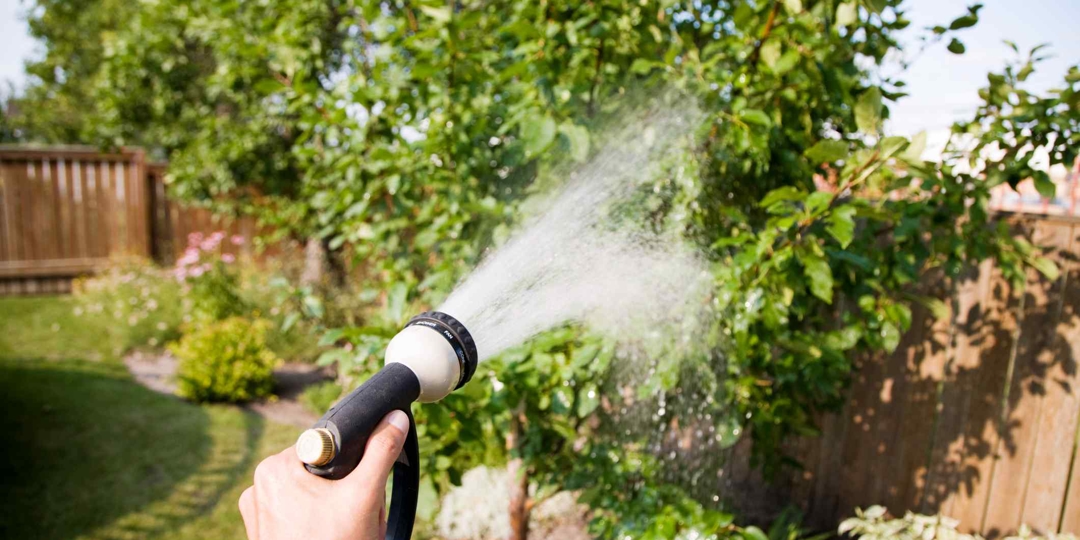
“You’re just seeing the tip of it,” said Barry White, Executive Director of the non-profit Trees for Houston. He was referring to the millions of trees dying due to the 2011 prolonged drought in Houston. The toppled trees in recent severe storms are evidence of the long-term effects of drought damage. At Monster Tree of Northwest Houston, we emphasize drought stress prevention to promote healthier trees.
Proper Irrigation During Dry Weather
Houstonians take pride in the established live oaks found across the city. Back in 2011, the drought was so severe that many trees were cut down. Since then, city authorities have emphasized the importance of irrigation during severe drought, preferably before signs of tree damage appear.
Prioritize younger trees, as their roots are not as deep as those of established trees, making them more susceptible to moisture stress. Unfortunately, water conservation measures across Northwest Houston force you to make tough irrigation decisions. Start by watering younger trees and also observe older trees for signs of drought stress.
Use drip irrigation to water trees deeply and slowly (12”-30”/30.5-76.2cm). Ensure you’re watering at the drip zone (the edge of the branches outward) rather than close to the trunk, which would be ineffective and wasteful.
Water your trees early in the morning or in the evening, as the soil moisture will be retained longer during these times compared to watering during peak sunlight.
Utilizing Mulch to Conserve Soil Moisture
More than watering trees is needed during the drought season, especially when water conservation is essential. Mulching helps retain soil moisture and lowers soil temperature, thereby maximizing your irrigation efforts.
Using coarse wood chip mulches can slow heat penetration into the soil and roots, prevent soil moisture loss, and suppress weeds. As the mulch decays, it also acts as a slow-release fertilizer. Choose organic mulch, such as pine needles, wood chips, or compost mixes, which decompose and nourish the soil and microorganisms. Note that organic mulch needs frequent replenishment.
Apply mulch before summer to ensure that when temperatures rise, the mulch layers help prevent tree stress.
Determining and Addressing Soil Nutrient Needs
Trees require proper nutrition for optimal growth. A well-fed tree is likely to fare better even during dry seasons. Regular soil tests to check nutrient and pH levels are essential. Various soil testing tools on the market can give you insights into your soil’s condition.
While trees typically do not need much fertilizer as it can lead to dependency and make roots stay close to the soil surface, which makes them vulnerable during severe drought, it is crucial to strike a balance. A well-fed tree does not suffer as much damage during a drought. All nutrients are critical for tree growth, but potassium is particularly important for tree hardiness. If your soil is deficient, use potassium fertilizers to strengthen cell walls and boost drought resistance.
Managing Insects and Disease Amidst Drought Conditions
It’s not uncommon to see diseased branches on trees during the dry season because insects reproduce rapidly in high temperatures and low moisture environments. Older trees and drought-stressed trees tend to be more vulnerable to insects and diseases. Insects like borers build tunnels within the tree bark, exacerbating the issue by inhibiting moisture and nutrient uptake.
Implementing drip irrigation, pruning, mulching, and using slow-release fertilizers can help control insect and disease infestations during the dry season. Applying potassium fertilizers will also make the tree trunk and bark hardier, reducing tree stress. Ensure that the mulch layer is away from the trunk, at least 2-3 feet (61-91cm) for large trees. Mulching too close to the trunk encourages pests. Additionally, you can plant beneficial plants that promote the presence of friendly insects, such as ladybugs and parasitic wasps.
The Importance of Regular Tree Trimming
Trimming is crucial for keeping trees healthy and mitigating the effects of drought. Pruning weakened branches reduces the tree’s vulnerability during severe storms. Regular tree trimming offers several benefits, including removing diseased or dead branches to prevent further stress, improving weight distribution, and enhancing structural integrity to minimize damage if the tree topples over. Trimming also mitigates the risk of falling branches and improves the tree’s aesthetic appeal.
However, note that trees store food in different parts, including weakened branches. Pruning reduces this food supply, potentially increasing the risk of tree damage if not done correctly.
Schedule Your Professional Tree Trimming Consultation Today
Tree trimming requires precise timing to avoid exacerbating drought stress. Contact our team at (713) 360-1696 or fill out this form for a free quote. We will evaluate the state of your trees and may recommend drought-resistant species if necessary.

